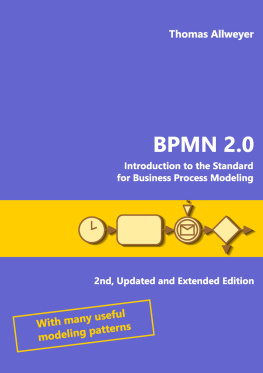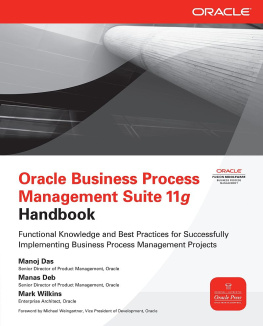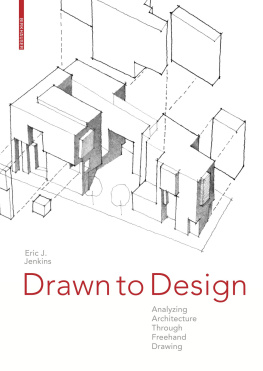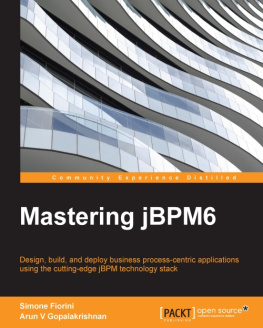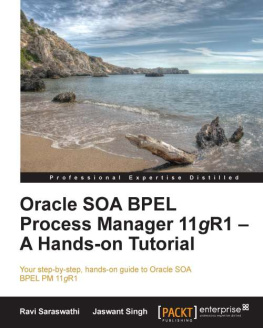Prof. Dr. Thomas Allweyer
Title of the original version:
BPMN 2.0 Business Process Model and Notation. Einfhrung in den Standard fr die Geschftsprozessmodellierung.
3. Auflage. BoD, Norderstedt 2015.
English version: Thomas Allweyer and Diana Allweyer
Bibliographische Information der Deutschen Nationalbibliothek:
Die Deutsche Nationalbibliothek verzeichnet diese Publikation in der Deutschen Nationalbibliographie. Detaillierte bibliographische Daten sind im Internet ber www.dnb.de abrufbar.
All brand names, company names, and product names in this book are trademarks or registered trademarks or trade names of their respective holders.
The information in this book serves informational purposes only. The author assumes no responsibility for errors or omissions in this document and does not warrant the accuracy or completeness of any information, text, graphics, links, or other items.
This book is provided as is without warranty of any kind, either express or implied. The author shall have no liability for damages of any kind that may result from the use of this information.
2016 Thomas Allweyer
Herstellung und Verlag:
BOD Books on Demand GmbH, Norderstedt
ISBN: 978-3-7412-1978-8
Contents
1 BPMN A Standard for Business Process Modeling
1.1 Why a Notation?
In order to manage business processes, they have to be described and documented. There are various possibilities to do so. The easiest way is the usage of textual or tabular descriptions. Flow chart diagrams are quite often created using presentation and graphics software. These diagrams mostly consist of small boxes and arrows, not following a defined method.
Unfortunately, this does not meet the requirements of exactly representing extensive processes with all relevant aspects, such as splitting rules, events, organizational units, data flow, etc. For this, appropriate notations are required. A notation for graphic business process modeling defines, for example, the symbols for the various process elements, their correct meaning, as well as their possible combinations.
Thus, a notation is a standardized language for the description of business processes. Everybody, who is familiar with this language, can understand models created by someone else. Furthermore, processes can be systematically analyzed, and their dynamic behavior can be simulated based on a standardized representation.
The subject of Governance, Risk, and Compliance (GRC) , which is getting increasingly important, also requires a standardized and complete documentation of adequate processes that makes sure that any legal and industry-specific demands with respect to risk management, quality management, and the compliance with safety rules, etc., are met.
Models also provide a basis for the development of information systems for executing and supporting business processes. Therefore, the models need a standardized structure, and they have to contain all information relevant for system development.
System-supported processes are more and more controlled by business process management systems (BPMS). These contain process engines which directly control the workflows using appropriate process models or formal process descriptions. For this purpose, the models have to meet very strict demands because they are not converted into a computer program by a human being, but directly processed by a machine.
In the course of time, several notations for process modeling emerged. These were quite often proprietary notations of special modeling tools or workflow management systems. By now, standards for executable process descriptions have been established, such as XPDL (XML Process Definition Language) [Workflow Management Coalition 2012], and BPEL (Business Process Execution Language) [OASIS 2007]. But XPDL and BPEL are no graphic notations, and their primary area of application is the definition of automated processes.
In the area of business-oriented process modeling, the notation of the event-driven process chain (EPC) is still frequently used. This notation was rather popular before the development of BPMN. However, EPC is not a standard, and many users have replaced EPC with BPMN. Today, most EPC modeling tools also support BPMN modeling.
Other standards, such as the activity diagrams of the Unified Modeling Language (UML), did not become accepted for business process modeling in practice. Their use basically remained restricted to the area of object-oriented software design, where UML is the accepted standard.
During the last years, BPMN (Business Process Model and Notation) has become accepted as the leading standard for business process modeling. The website bpmnmatrix.github.io contains a list of more than 50 tools which support BPMN modeling. An increasing number of websites, weblogs, and publications demonstrate the growing interest in this notation (e.g. [Debevoise and Taylor 2014], [Freund and Rcker 2014], [Herrera 2015], [Silver 2012]). Even a novel on process modeling with BPMN has been published [Grosskopf et al. 2009]. A selection of interesting internet sources can be found in the annex of this book.
Many organizations are providing their process management teams with BPMN training, and they are rolling out BPMN as their organization-wide modeling standard. In the e-government standards of Switzerland, for example, the use of BPMN is recommended as a common notation [Fischli et al. 2016]. Other examples of organizations which have published their BPMN modeling guideline documents are the public administrations of Queensland (Australia) [Queensland Government 2016] and British Columbia (Canada) [Lindner 2014]. In a recent survey on the use of BPM tools, BPMN was also the most widely used process modeling notation [Lbbe and Schngelberger 2015].
1.2 Development of BPMN
Originally, BPMN was developed by the Business Process Management Initiative (BPMI), a consortium which consisted mainly of software companies. In the beginning, the purpose was to provide a graphical notation for process descriptions expressed in BPML (Business Process Modeling Language). Comparable to BPEL, BPML was used for specifying process descriptions which could be executed by a BPMS. BPML is not being developed further anymore; it has been given up in favor of BPEL.
The first version of the BPMN specification was developed by a team lead by Stephen A. White from IBM. It was published in 2004. In the meantime, BPMI has become a part of the Object Management Group (OMG). This organization is known for several software standards, such as the aforementioned UML (Unified Modeling Language).
In 2006, BPMN version 1.0 was officially accepted as an OMG standard. After some smaller changes in versions 1.1 and 1.2, version 2.0 brought more comprehensive changes and extensions. It was published in 2011. The latest version of the specification document, version 2.0.2 was released in 2013 [OMG 2013]. The actual content has not changed from version 2.0, as only minor corrections of the text have been made. In 2013, BPMN also became an official ISO standard [ISO 2013].
The most recent version of the BPMN specification can be found here:
www.omg.org/spec/BPMN
1.3 Contents of BPMN 2.0
For the majority of BPMN users, the most important aspect is the graphical representation of the models. BPMN provides three diagram types:
- Process or collaboration diagram: In this type of diagram, the process flow can be modeled, including activities, splits, parallel flows, etc. It is also possible to show the collaboration between two or more processes with their exchanged messages. Process diagrams and collaboration diagrams are of the same diagram type. A diagram with only one process is often called process diagram, while a diagram with several interacting processes is a collaboration diagram.
Next page
